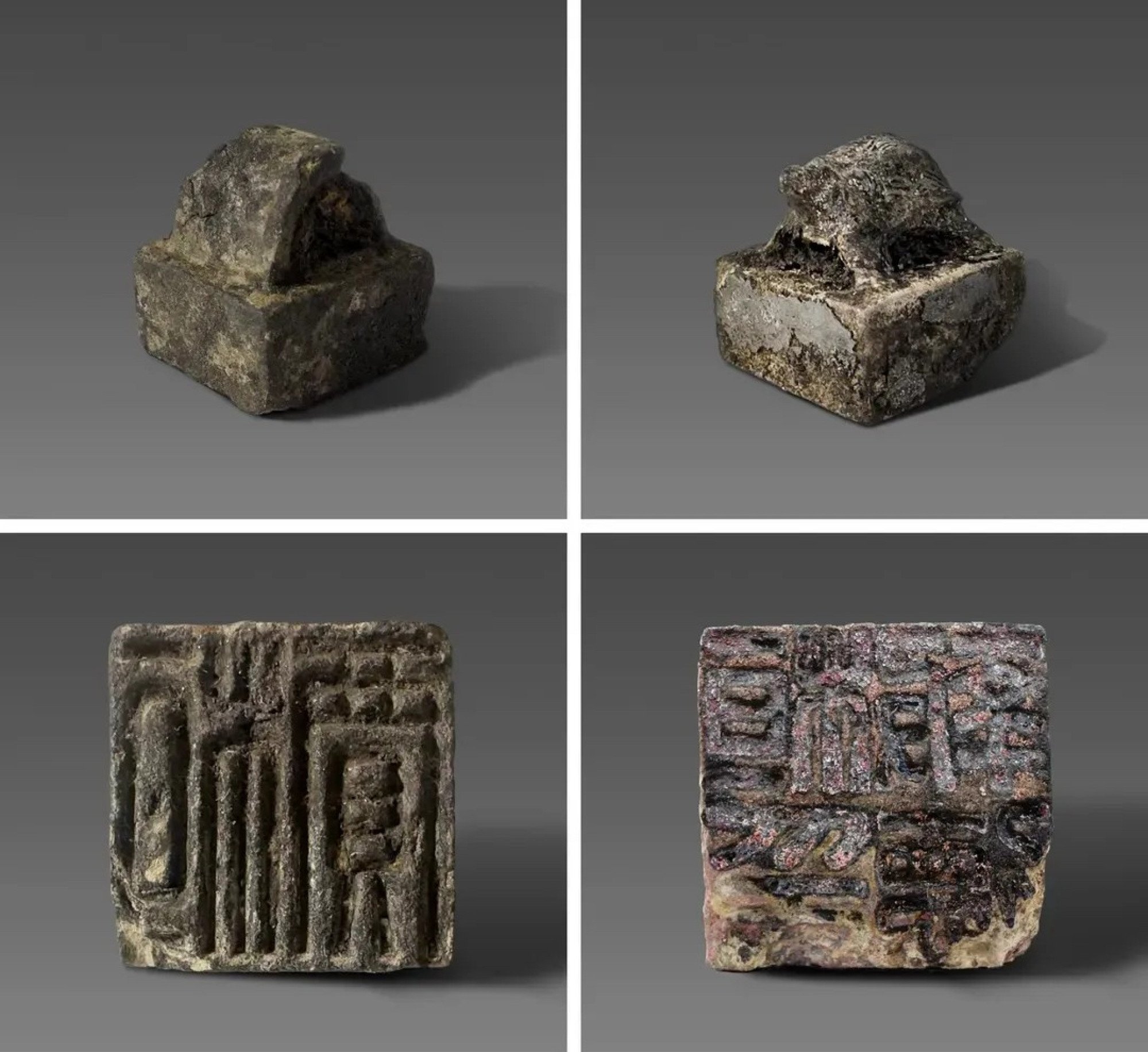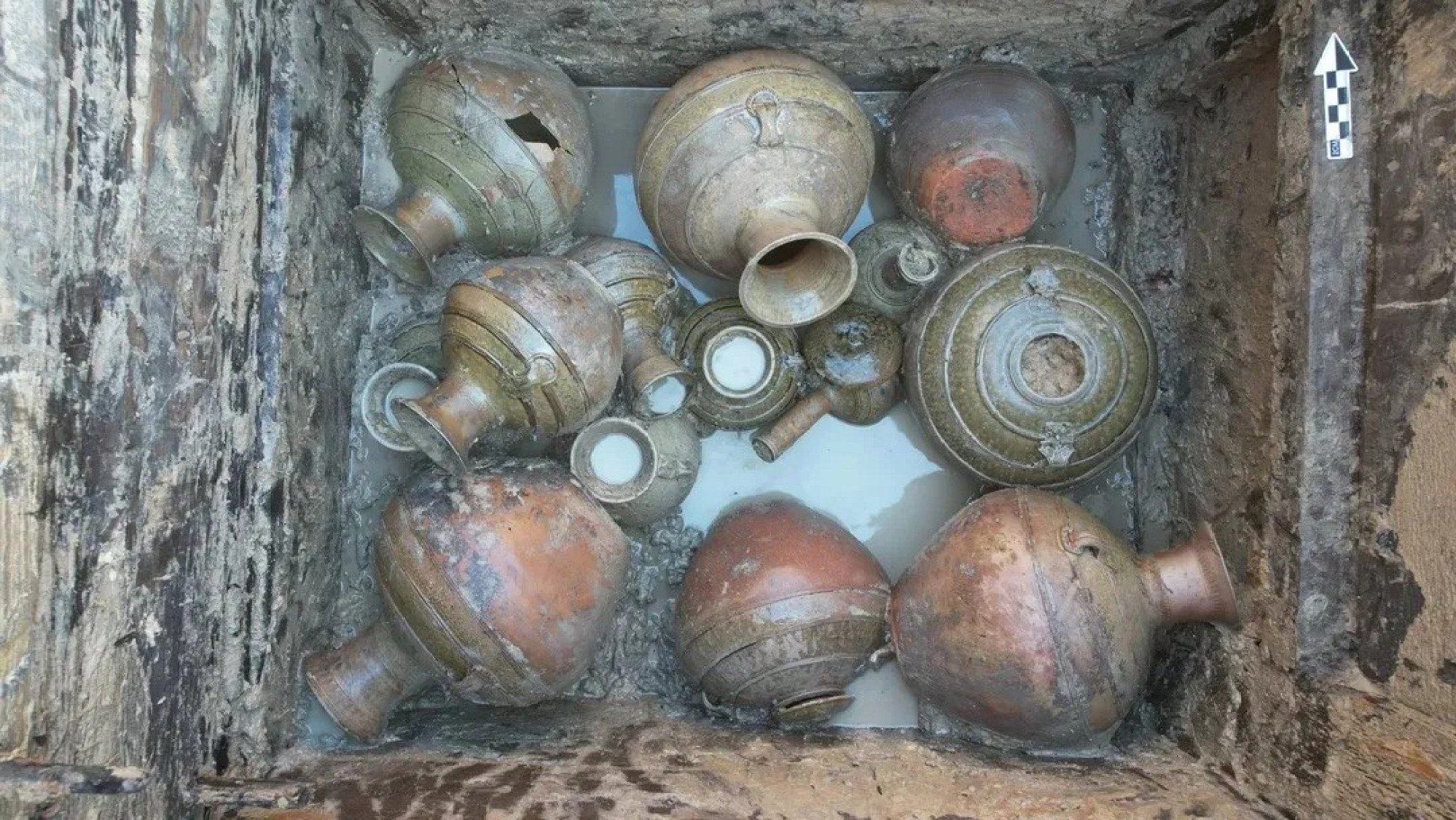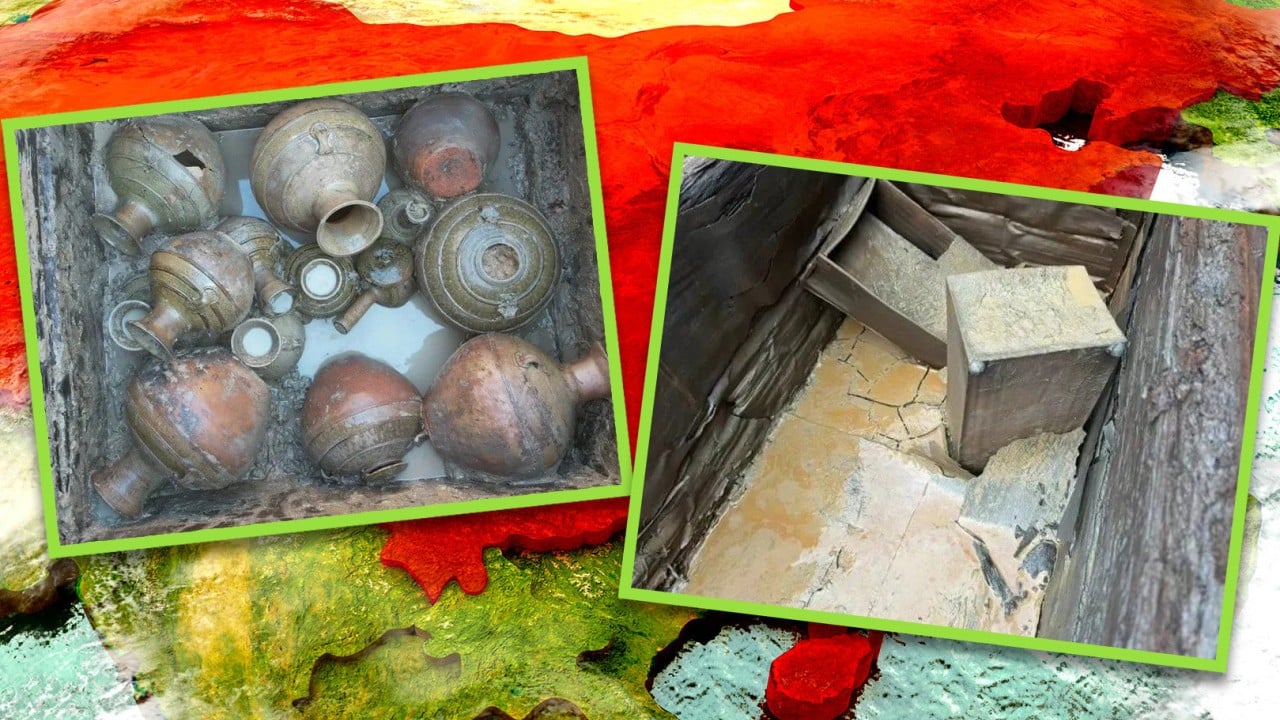Around 1,800 years ago, a family in eastern China built three elaborate tombs that would become the final resting places for their loved ones, but two of the ancient burial sites became popular targets for looters who scraped the sites clean.
But, one of the tombs was never discovered, and the other two were forgotten centuries ago, leaving them to lie without disturbance over countless generations.
Then, in late 2023, workers developing a local park expansion in Shandong province in eastern China discovered a partially damaged mound, and the excavation process began.
“Although two of the three tombs excavated in Dazhuangzi Cemetery were robbed, the structure of the tombs was relatively clear, and a large number of precious cultural relics were still unearthed,” said the Institute of Archaeology under the Chinese Academy of Social Sciences in an announcement.
“What is rare is that two of the three tombs were unearthed with seals and shared the surname Huan. Therefore, it can be inferred that the tomb probably belonged to the Huan family.”

The tombs date back to the Western Han dynasty (202BC-9AD), and the untouched tomb was “particularly noteworthy” for its clear structure, allowing the scientists to determine that it had obvious residential characteristics.
The well-preserved tomb contained a tomb door, passage, and coffin chamber. While the coffin was well preserved, the bones inside decayed over the millennia.
“The discovery of the exquisitely crafted coffin structure, especially the coffin-carrying carriage, provides valuable material for studying Han dynasty burial customs along the southeastern coast of Shandong,” said the announcement.
The funerary objects included beautiful pottery, an iron sword, a bronze mirror and a host of wooden objects. Additionally, lacquered “ear cups” – which were likely used to drink ancient alcohol – were buried in a large box found at the site.

One particularly standout discovery was a Huan family seal in the shape of a turtle made out of bronze.
The excavation occurred between December 2023 and January 2024 in Rizhao, a coastal city famous for its push for a renewable lifestyle. It has mandated that water in new buildings be heated via solar power, and in 2009, the United Nations said it was one of the most habitable cities in the world.
Archaeologists believe the tombs were from the Western Han dynasty, the older of the two periods of Han rule.
The Han dynasty (202BC-9AD, 25-220) was briefly usurped by the Xin dynasty (9-23) ruled by Wang Mang, who was a powerful official that executed a palace coup by placing the infant Liu Ying as the next in line after both the Emperor and Empress died with no heirs.
After rebels overthrew Wang, the Han dynasty resumed ruling China, and Western Han (older) vs Eastern Han (younger) is used to distinguish between the post-Xin years.
The Han dynasty is considered to be one of the golden eras of Chinese history because of its economic success and leaps in science and technology, such as papermaking, the introduction of negative numbers in maths, and even early earthquake detection technologies.
The Han dynasty ended with the coup of the warlord Cao Pi, which triggered the violent Three Kingdoms Period (222-280).


